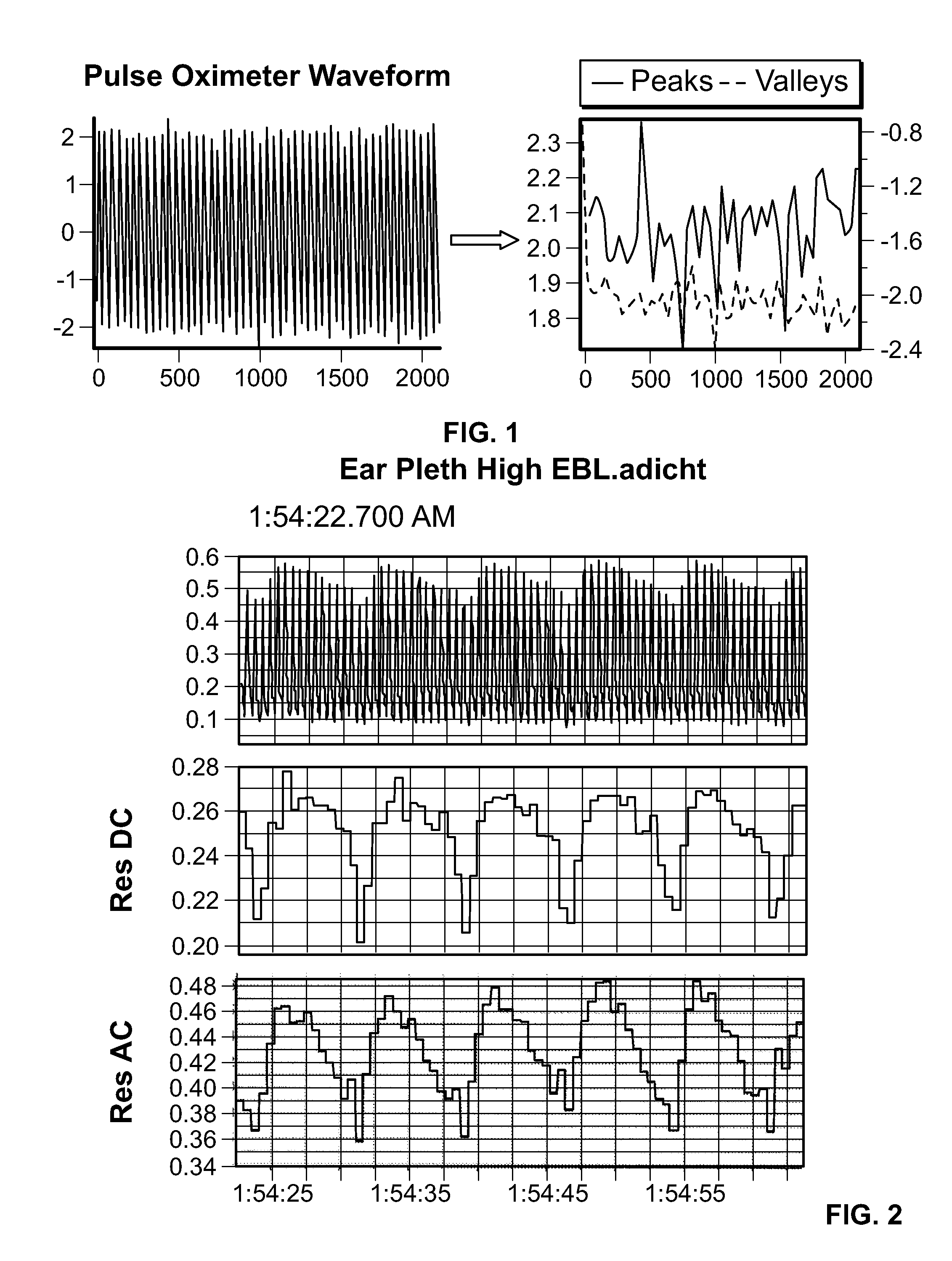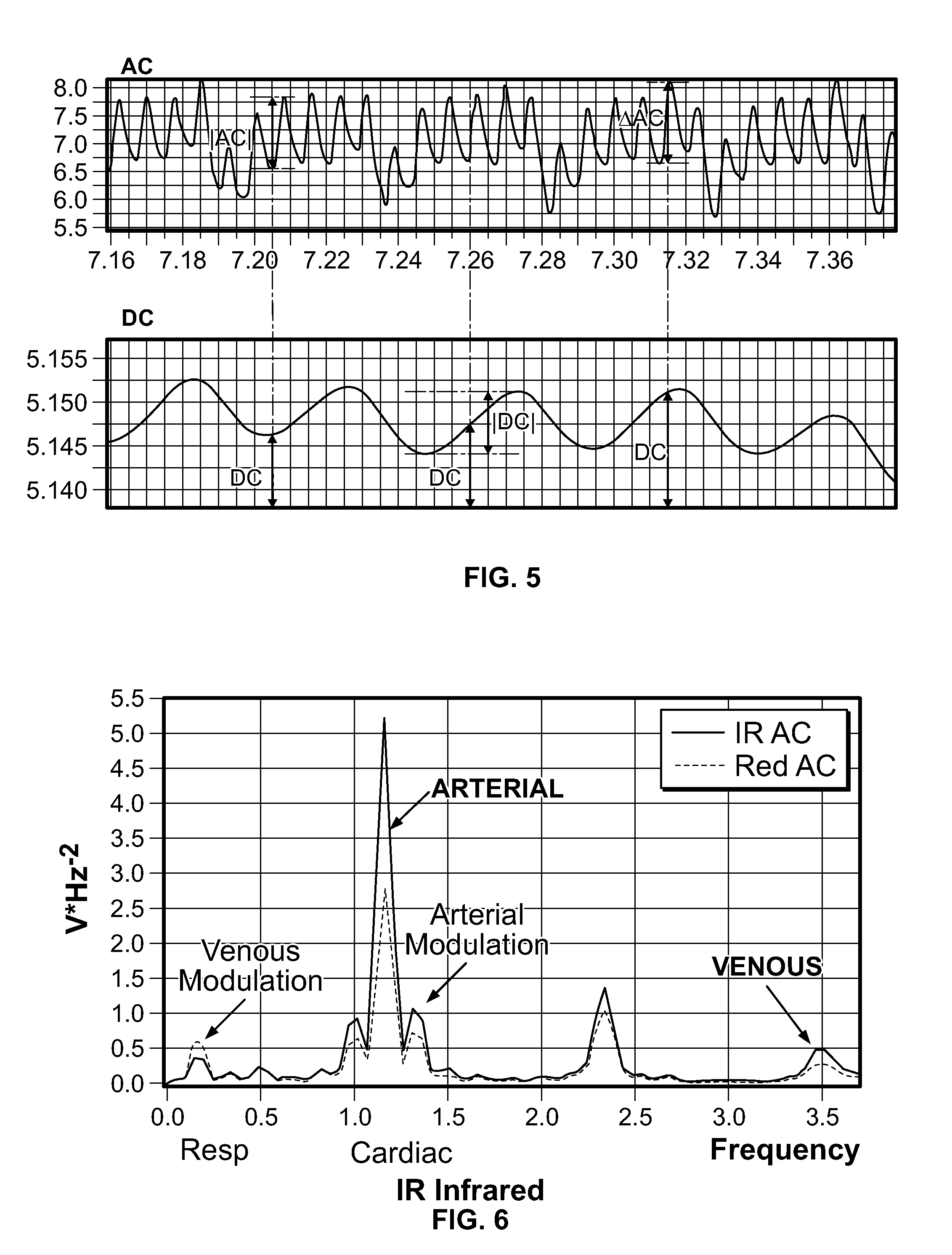Systems and Methods Utilizing Plethysmographic Data for Distinguishing Arterial and Venous Oxygen Saturations
a technology of arterial and venous oxygen saturation and plethysmographic data, which is applied in the field of systems and methods for studying and utilizing flow waveforms in the peripheral vasculature, can solve problems such as at the expense of valuable physiological data
- Summary
- Abstract
- Description
- Claims
- Application Information
AI Technical Summary
Benefits of technology
Problems solved by technology
Method used
Image
Examples
Embodiment Construction
)
[0040]The present disclosure expands on the known usefulness of the PG waveform. In particular, the present disclosure relates to improved apparatus, systems and methods for using the PG waveform to determine peripheral venous and arterial saturations, e.g., oxygen saturations. Thus, in clinical applications, while a decreasing or low arterial oxygen saturation, e.g., below 90%, is indicative of hypoxemia, a decreasing or low venous oxygen saturation, e.g., below 60%, may be indicative of altered tissue factors, such as inadequate tissue perfusion or excessive tissue oxygen consumption, as well as hypoxemia; and an excessively high venous oxygen saturation, e.g., approximating the arterial value, may be indicative of arteriovenous shunting without capillary tissue exchange. As is universally known, mixed venous saturation, measured at the pulmonary artery is an excellent indicator of tissue perfusion adequacy on a global level throughout the body. According to the present disclosur...
PUM
 Login to View More
Login to View More Abstract
Description
Claims
Application Information
 Login to View More
Login to View More - R&D
- Intellectual Property
- Life Sciences
- Materials
- Tech Scout
- Unparalleled Data Quality
- Higher Quality Content
- 60% Fewer Hallucinations
Browse by: Latest US Patents, China's latest patents, Technical Efficacy Thesaurus, Application Domain, Technology Topic, Popular Technical Reports.
© 2025 PatSnap. All rights reserved.Legal|Privacy policy|Modern Slavery Act Transparency Statement|Sitemap|About US| Contact US: help@patsnap.com



